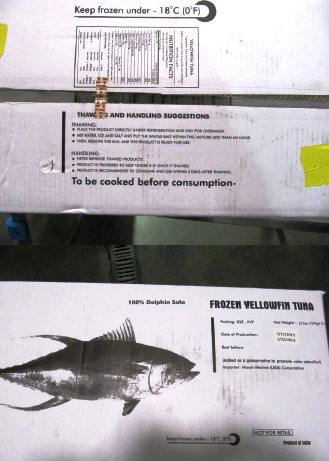FDA issues food safety rules–at long last
I’m catching up with events that occurred while I was out of the country. One was the release by FDA of two of its long-awaited proposals for food safety rules.
These go into the Federal Register on January 16. But they were announced on January 4, perhaps to commemorate the two-year anniversary of President Obama’s signing the Food Safety Modernization Act authorizing these rules.
The two massive sets of proposed rules, 680 and 547 pages, respectively, are:
Still to come: proposed rules for
- Food importers
- Preventive controls for animal feed
- Accreditation of third-party auditors
Notice that all of these are proposals. Terrific as it is to have them released, no breath-holding is in order.
Once the proposals appear in the Federal Register, interested parties will have 120 days to comment. It will probably take a year for the FDA to write final rules. For the produce standards at least, larger farms get 2 years before implementation kicks in. Smaller farms get 3 or 4 more years to figure out how to comply.
Some farms, such as those bringing in less than $500,000 per year, are exempt. Chalk that up to successful lobbying by small farmers.
The FDA estimates that the new rules will cost large farms about $30,000 a year, and small farms $13,000. It says that following the rules will prevent 1.75 million cases of foodborne illness a year and save more than $1 billion in costs.
The rules for produce focus on prevention of contamination through:
- Agricultural water
- Biological soil amendments
- Poor worker hygiene
- Domesticated and wild animals
- Equipment, tools and buildings.
All food producers will need to develop, submit, and follow a written food safety plan that includes:
- A hazard analysis
- Preventive controls
- Monitoring procedures
- Corrective action procedures
- Verification procedures
- A recall plan
That’s the basic outline. The devil is in the details and in this case there are plenty of them (I have much sympathy for whoever has to write these things). The proposals devote hundreds of pages to definitions. Here, for example, is FDA’s summary of its definition of farm and farm activities. Hint: RAC = Raw Agricultural Commodity.
- The basic purpose of farms is to produce RACs and RACs are the essential products of farms.
- Activities that involve RACs and that farms traditionally do for the purposes of growing their own RACs, removing them from the growing areas, and preparing them for use as a food RAC, and for packing, holding and transporting them, should all be within the definition of “farm” in §§ 1.227 and 1.328.
- Activities should be classified based in part on whether the food operated on is a RAC or a processed food, and on whether the activity transforms a RAC into a processed food.
- Activities farms may perform on others’ RACs should appropriately be classified as manufacturing/processing, packing, or holding in the same manner as these activities are classified off-farm when the RACs are to be distributed into commerce.
- Manufacturing/processing, packing, or holding food– whether RACs or processed foods, from any source–for consumption on the farm should remain within the farm definition.
I include this example to illustrate what food producers are up against. It explains why practically every group commenting on the proposals said the same things: “we are glad they are out but must reserve comment until we—and our lawyers—have a chance to go over the rules in detail.”
My guess is that we will be hearing plenty more about these reactions when they do.
In the meantime, the elephant in the room issue is funding. The FDA’s budget is already overstressed. How can it possibly add monitoring and enforcement responsibilities without additional staff and funding? How can it get new resources from this Congress?
Recall: the FDA gets its funding from congressional agriculture appropriations committees, not health committees.
The FDA addresses the funding issue in a website Q and A:
G.5. Does FDA have sufficient funding to implement the new rule? The funding we have available through the annual budget cycle and fees impacts the number of FTEs we have and will be a factor in the way that FDA handles its significant and far-ranging activities, including the way that this legislation is implemented… Without additional funding, FDA will be challenged in implementing the legislation fully without compromising other key functions. We look forward to working with Congress and our partners to ensure that FDA is funded sufficiently to achieve our food safety and food defense goals.
Indeed.
To submit a comment:
- Go to http://www.regulations.gov.
- Refer to Docket No. FDA-2011-N-0920.
- Do it by May 16.





